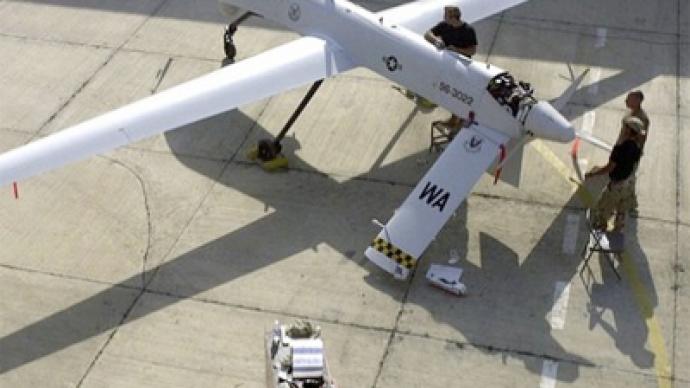Naval drones weapon of choice against China

The US military is working to develop drones capable of taking off from US Navy aircraft carriers based in the Pacific. Analysts say the primary goal will be to confront China.
"They will play an integral role in our future operations in this region [Asia]," Vice Adm. Scott Van Buskirk, commander of the US 7th Fleet in the Pacific and Indian oceans, told AP. "Carrier-based unmanned aircraft systems have tremendous potential, especially in increasing the range and persistence of our intelligence, surveillance and reconnaissance operations, as well as our ability to strike targets quickly."Land based drones are used frequently by the US military, especially in tactical operations in Iraq, Afghanistan, and Pakistan. Sea based drones are still in development, with the first tests having been conducted earlier this year. While a counter-balance to China has not been mentioned by the Pentagon directly, most analysts and experts see the development of sea based drones as a weapon of choice against rising Chinese military power.“Chinese military modernization is the major long-term threat that the U.S. must prepare for in the Asia-Pacific region, and robotic vehicles — aerial and subsurface — are increasingly critical to countering that potential threat," Patrick Cronin, a senior analyst with the Washington-based Center for New American Security told AP.While China’s military is still smaller and less sophisticated than America’s, its growth potential has caused the US to pay greater attention. The development of drones for aircraft carriers is evidence the US Navy is seeking new weapons and strategies for future defense tactics with China and others in mind. Currently carrier based fighter jets must take off from about 500 nautical miles from their target, leaving the carrier ships within range of land based missiles. Drones however would be able to operate as far out as 1,500 nautical miles from the carrier, putting the ships out of range. "Introducing a new aircraft that promises to let the strike group do its work from beyond the maximum effective firing range of the anti-ship ballistic missile — or beyond its range entirely — represents a considerable boost in defensive potential for the carrier strike group," explained James Holmes of the US Naval War College."Drones, if they work, are just the next tech leap. As long as there is a need for tactical aviation launched from the sea, carriers will be useful weapons of war," commented Ret. Read Adm. Michael McDevitt. The currently timeline has operational drones on ships by 2018. Some in the US Navy however want them much faster. "Seriously, we've got to have a sense of urgency about getting this stuff out there," Adm. Gary Roughhead, chief of naval operations said. "It could fundamentally change how we think of naval aviation."Roughhead feels the 2018 timeline is “too damn slow."Northrop Grumman, Boeing, General Atomics Aeronautical Systems and Lockheed Martin are all working to develop sea based drones. Northrop Grumman was the first to launch a successful test flight of their X-47B prototype from the ground. Sea based testing is set for sometime in 2013.















